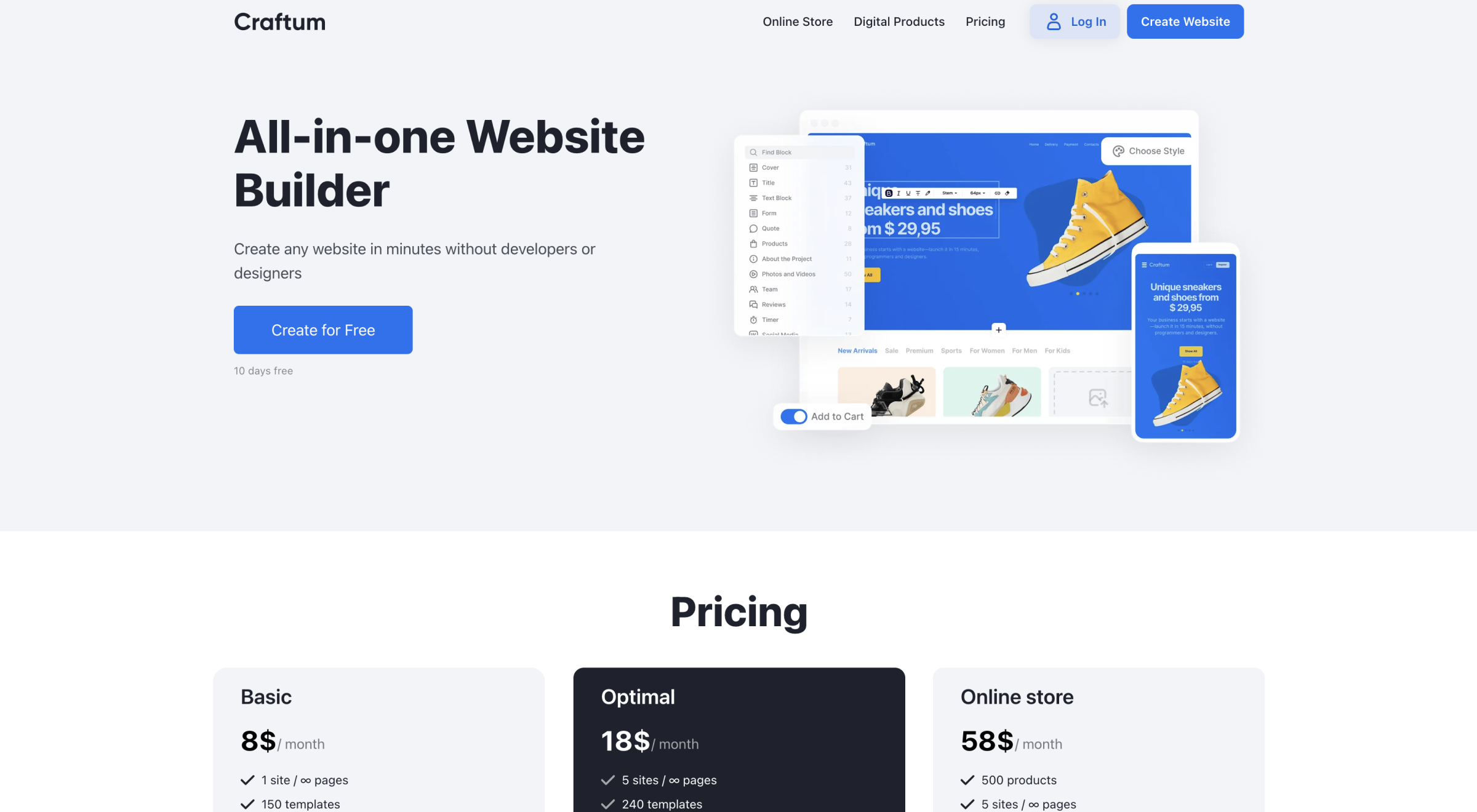
Introduction
Craftum — Website Builder Development Case Study
Timeweb / 2023–2024
When I joined Timeweb, the company was at an inflection point. It was already a mature hosting provider with a huge technical base, millions of clients, and a recognizable brand, but without a clear direction for product growth. Everyone was discussing the same thing: where to go next?
The hosting market is stable but not growing. You can sell "servers and domains" endlessly, but there's little future in that. We realized we needed a new product category — not just infrastructure, but a platform where website creation and hosting come together in one flow.
This is how the Craftum project began.
Where the Idea Came From
We started with a simple question: what prevents an ordinary person from creating a website today?
The answer turned out to be three words — fear, complexity, fragmentation.
A person has an idea, but to realize it, they need to go through chaos: choose hosting, buy a domain, connect a CMS, install a template, figure out DNS and SSL.
Each stage is a pain point.
No-code solutions already existed on the market, but they all ended halfway. Webflow, Tilda, Framer solve the design problem, but not the infrastructure. To publish a website, the user has to go outside again — to hosting, domains, settings.
We decided to break this circle.
Craftum was conceived as a product that allows the user to:
Create → Publish → Manage — Without code, without servers, without fear.
Market Research
We conducted research on the no-code market in Europe and CIS.
It turned out that most platforms focus on aesthetics but almost never solve technical problems.
None offer a fully closed infrastructure.
Timeweb had exactly that missing element — its own cloud hosting, CDN, and domain management system.
We realized that if we combine a visual editor with Timeweb's infrastructure, we could build a unique product at the intersection of hosting and no-code platform.
Concept and Hypothesis
Craftum was supposed to become not just a website builder, but a "full-cycle web platform" where the user:
- creates a website using a visual editor,
- connects a domain in one click,
- and instantly publishes the result on Timeweb Cloud.
No FTP, SSL, DNS, or other scary abbreviations.
We formulated the key hypothesis:
If we combine a visual builder with hosting infrastructure, users will launch websites 3–5 times faster, and retention will grow due to simplicity and trust in the ecosystem.
Prototyping and UX
I started by designing the user flow: from the first idea to publication.
The task was to remove everything unnecessary from this path.
Main principle: every action should provide visual feedback.
The user adds a section — it immediately appears on the canvas.
Changes a font — sees the result instantly.
Presses "publish" — the site immediately deploys on the craftum.site subdomain, without waiting and setup.
Inside the editor, we implemented contextual editing — no side panels. Everything is edited directly on the canvas.
Drag-and-drop is implemented not as a mechanic, but as natural interaction: blocks react to the cursor, highlighting available insertion zones.
Craftum's visual structure became almost alive — editing feels like working with a layout in Figma, not with HTML.
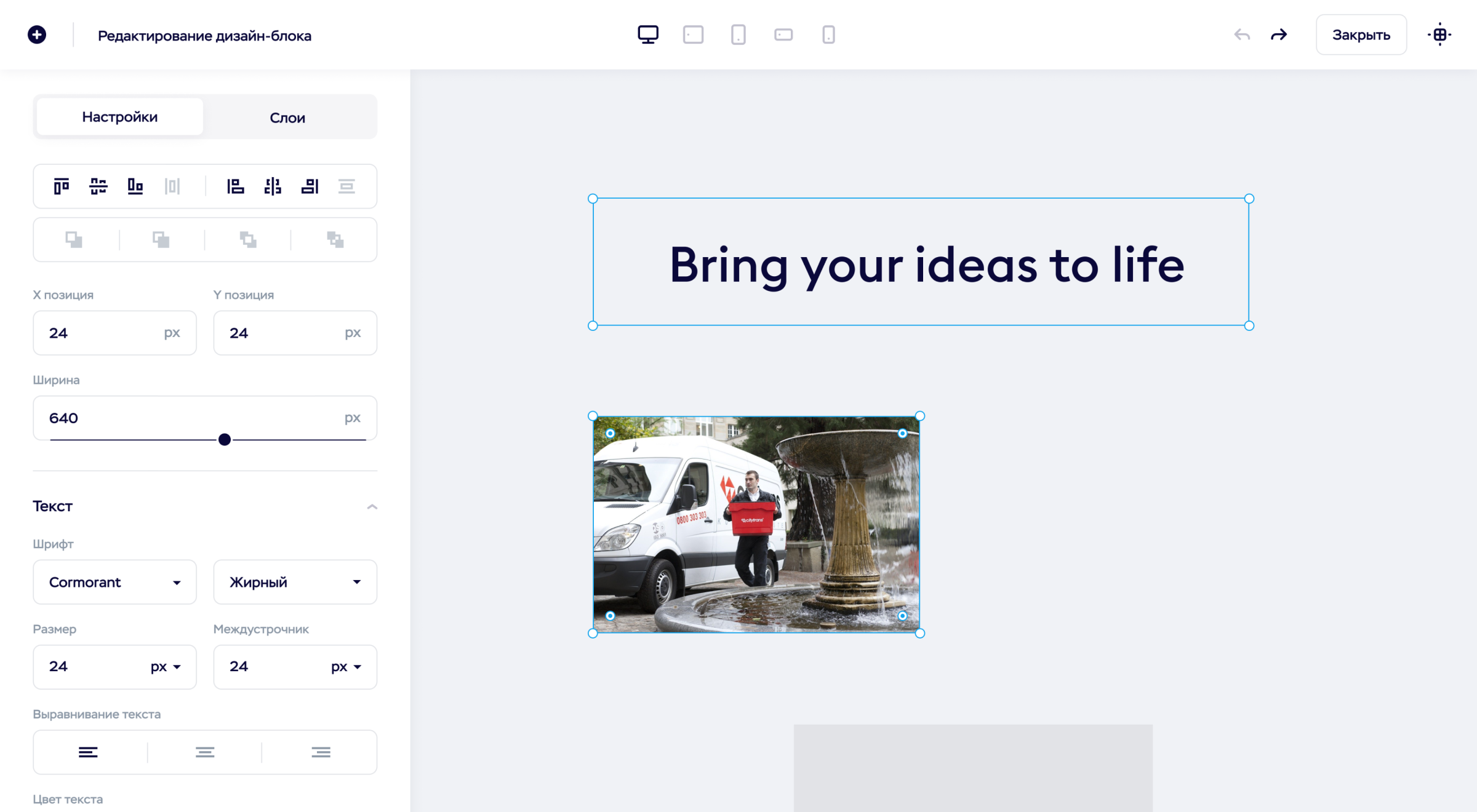
Craftum visual editor with contextual editing and real-time feedback
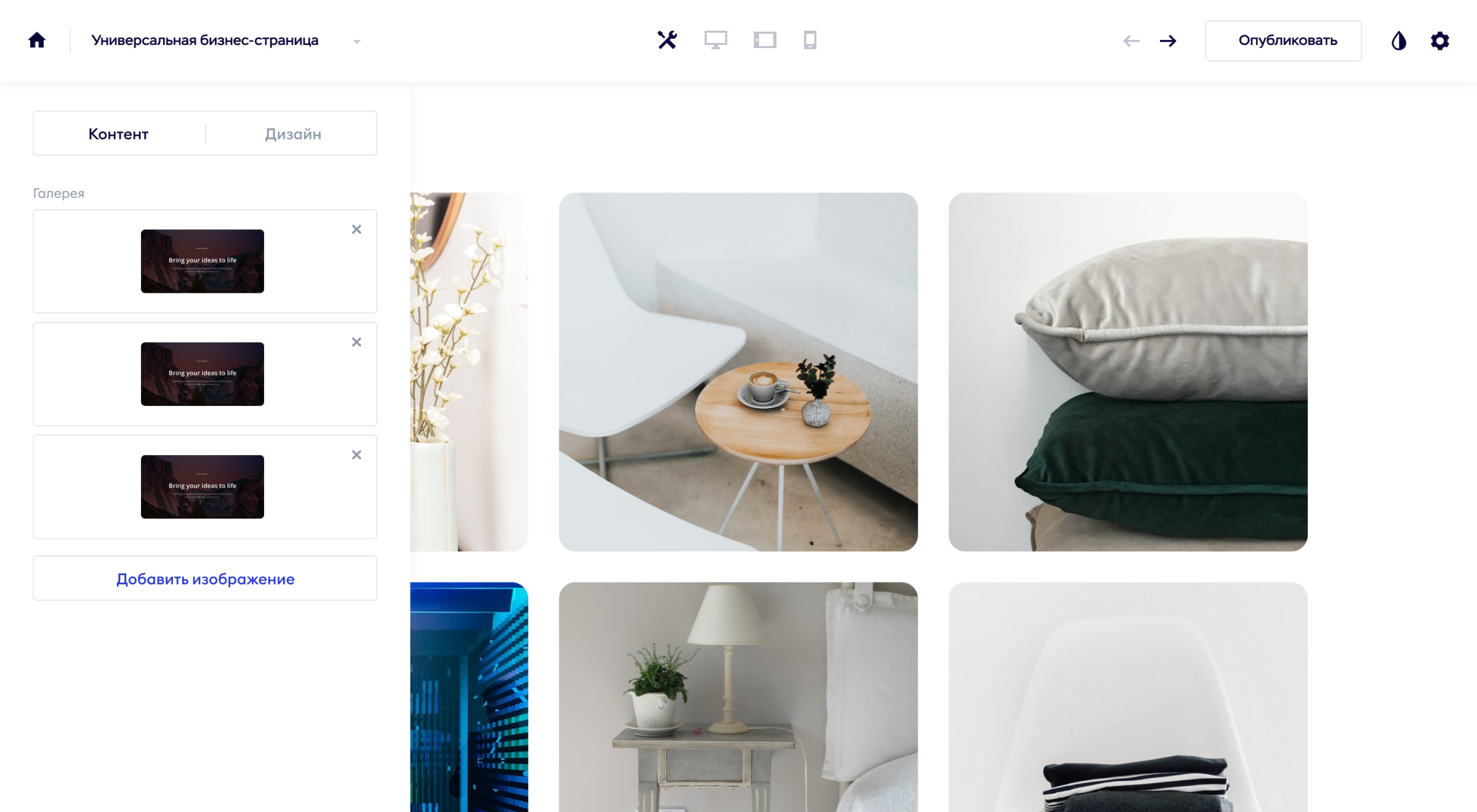
Drag-and-drop interface showing visual insertion zones and block interactions
Product Architecture
Craftum's technical architecture is the connection of a visual editor and the Timeweb Cloud platform.
Each created website becomes an isolated container with automatic SSL, CDN, and versioning system.
After publication, the site lives on Timeweb's infrastructure, and the user manages everything from one interface.
Instead of the usual no-code scheme "export to HTML + external hosting," Craftum offers a completely autonomous ecosystem.
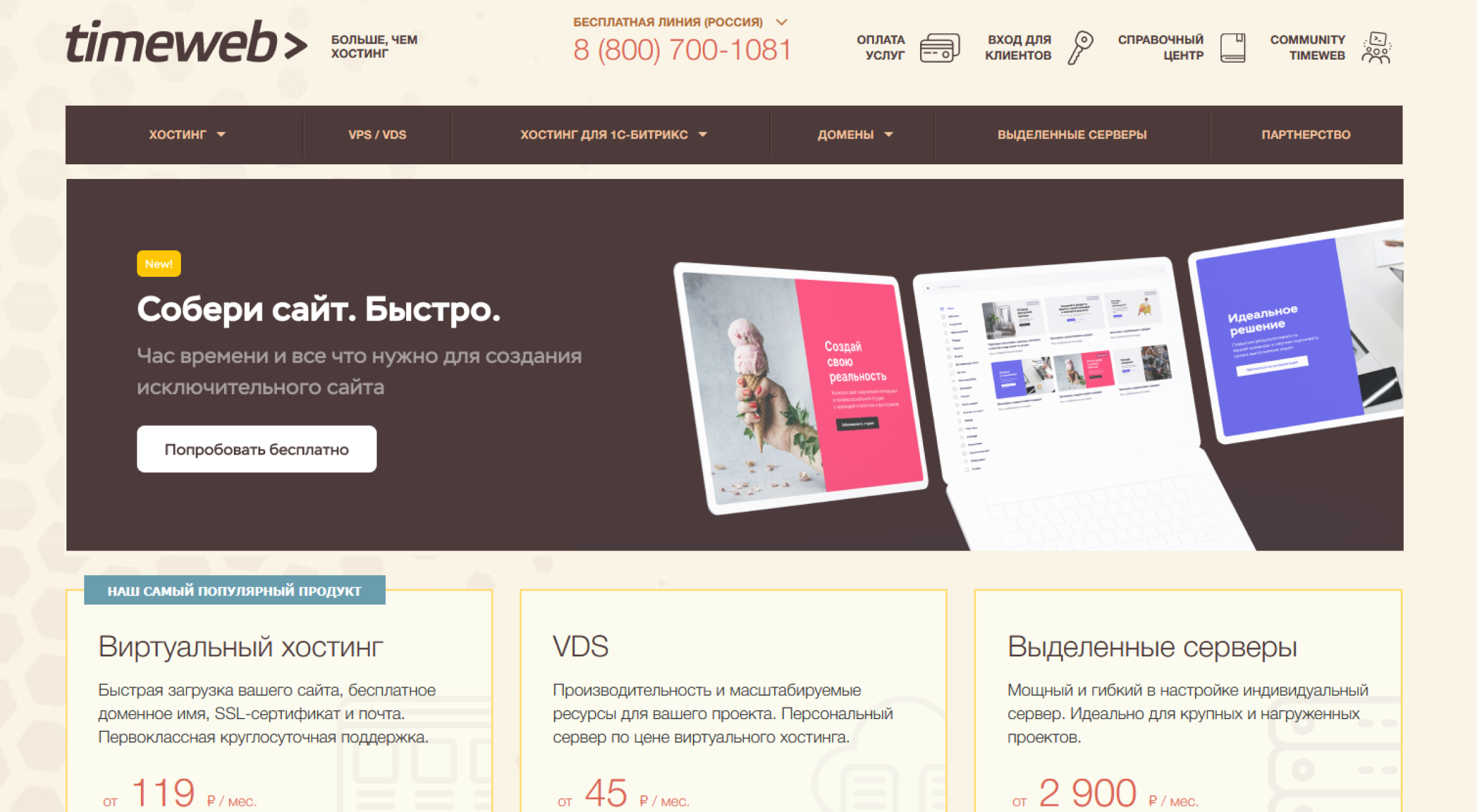
Craftum architecture: visual editor integrated with Timeweb Cloud infrastructure
Design System
I created Craftum's design system from scratch — modular, with variables and blocks from which any page can be assembled.
Basic principles:
- visual lightness;
- semantics through color and shadow;
- living typography, where accents hold visual rhythm, not contrast.
The block system is built on the Lego principle: sections are interchangeable but maintain the logic of adaptability and grid.
Thanks to this, designers and users can assemble complex landing pages in minutes, and the interface always looks cohesive.
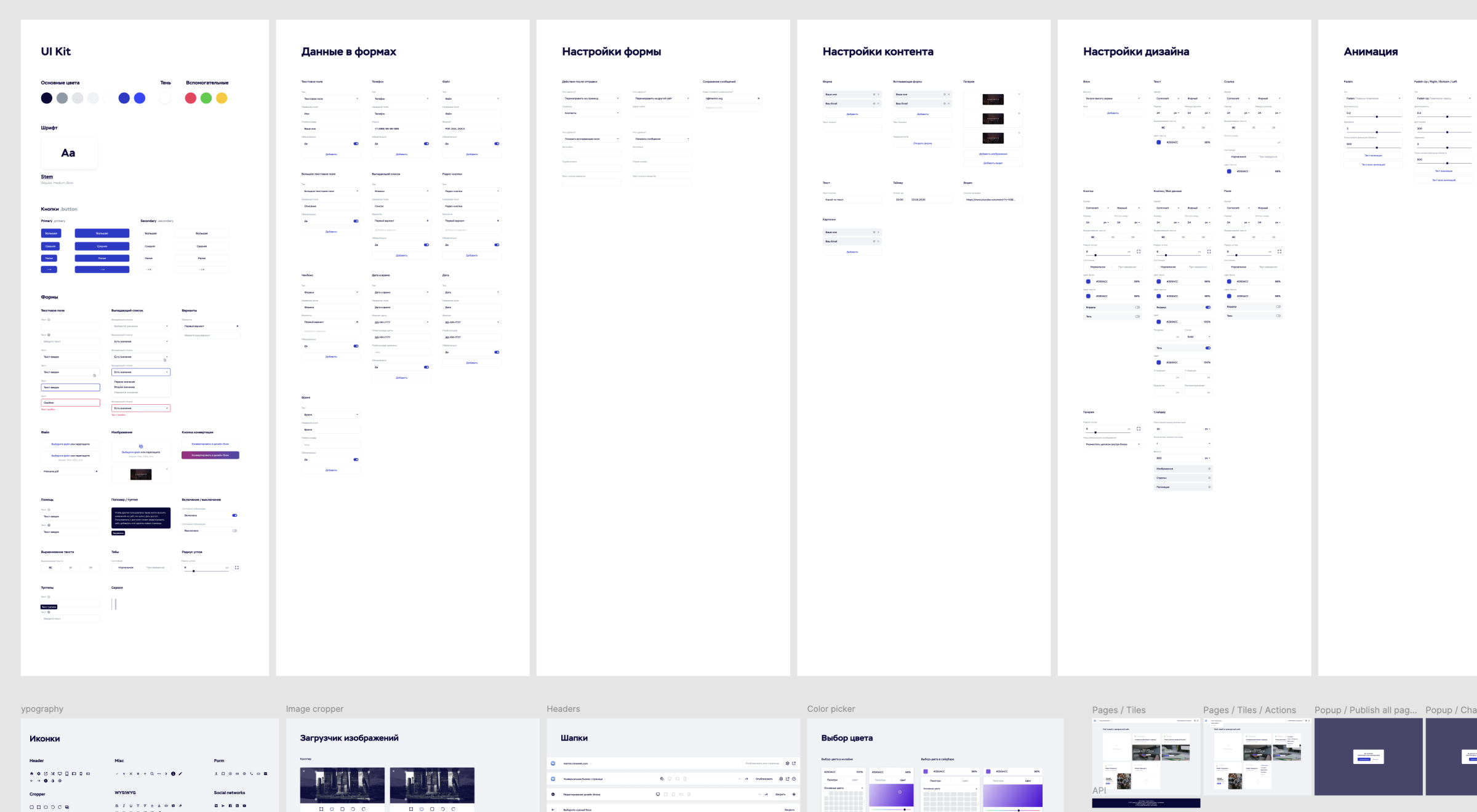
Craftum design system: modular blocks and components for rapid website building
Results
After launch, Craftum transformed from an internal Timeweb experiment into a separate development direction.
Six months after MVP, we saw:
| Metric | Result | Impact |
|---|---|---|
| Active websites | 15,000+ | Strong adoption |
| Built-in hosting usage | 60% | Seamless integration |
| Time to first publication | 11 minutes | Rapid deployment |
| 30-day retention | 58% | +37 pts vs classic hosting |
| Registration to activation | +44% | Improved conversion |
What Became Key
Craftum showed that Timeweb's strength lies not only in infrastructure but also in the ability to make it transparent to humans.
Where there was complexity and fear before, now there is clarity and speed.
This was not just a project, but a new growth point for the company.
Timeweb ceased to be just hosting.
It became an ecosystem where a website can not only be stored — it can be created.

